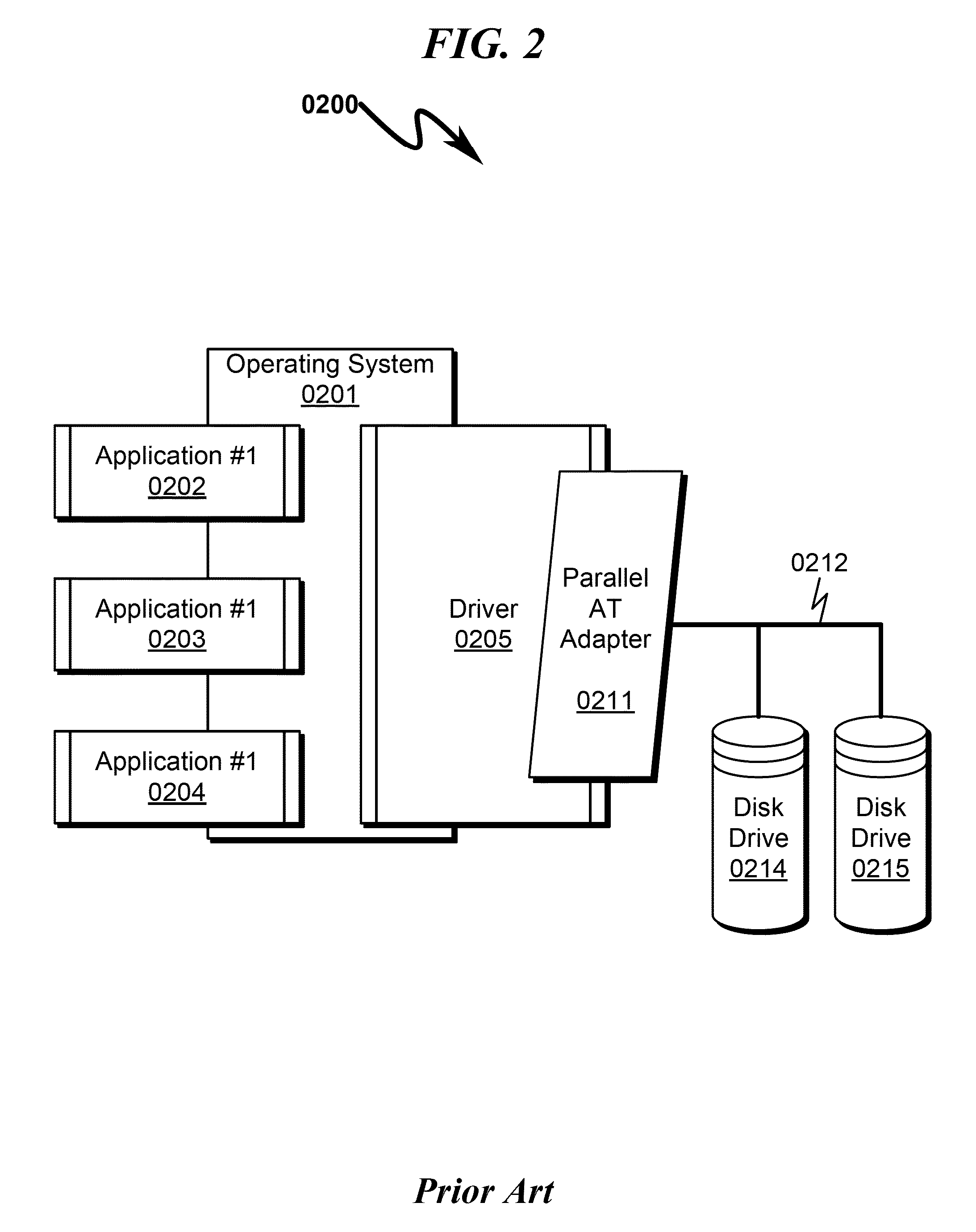Data storage architecture extension system and method
a data storage and architecture technology, applied in the field of system/methods associated with computer data storage, to achieve the effect of reducing cable management, reducing cost overhead, and expanding the effective storage capacity of the hba interfa
- Summary
- Abstract
- Description
- Claims
- Application Information
AI Technical Summary
Benefits of technology
Problems solved by technology
Method used
Image
Examples
example # 1
LBA Mapping Example #1
Sequential Incremental Mapping
[0242]The teachings of the present invention as applied to some preferred exemplary embodiments utilizing a sequential incremental mapping method as generally described in the flowchart of FIG. 11 (1100) can be understood via the use of an exemplary daisy-chained drive configuration. In this example we will use four drives, although the present invention makes no limitation on the number of drives in a PTDDC daisy-chain configuration. In this example, the following disk drives will be connected via PTDDC interfaces to a main HBA interface on a computer system:
[0243]
Disk CapacityCapacityCapacityDrive #(TB)(LBNCNT)(bytes)11.0 TB1,953,525,1681,000,204,866,01621.5 TB2,930,277,1681,500,301,910,01632.0 TB3,907,029,1682,000,398,934,01643.0 TB5,860,533,1683,000,592,982,016
[0244]Using the sequential incremental mapping method as described above, a logical drive access starting at logical block (5,000,000,000) would proceed as follows:[0245]...
example # 2
LBA Mapping Example #2
Direct Mapping
[0254]The teachings of the present invention as applied to some preferred exemplary embodiments utilizing a direct mapping method as generally described in the flowchart of FIG. 12 (1200) can be understood via the use of an exemplary daisy-chained drive configuration. In this example we will use four drives, although the present invention makes no limitation on the number of drives in a PTDDC daisy-chain configuration. In this example, the following disk drives will be connected via PTDDC interfaces to a main HBA interface on a computer system:
[0255]
Disk CapacityCapacityCapacityDrive #(TB)(LBNCNT)(bytes)11.0 TB1,953,525,1681,000,204,866,01621.5 TB2,930,277,1681,500,301,910,01632.0 TB3,907,029,1682,000,398,934,01643.0 TB5,860,533,1683,000,592,982,016
[0256]This disk drive information is used to generate a disk drive LBA mapping table associated with each disk drive (and accessible by the individual PTDDC controllers). This mapping table has the foll...
PUM
 Login to View More
Login to View More Abstract
Description
Claims
Application Information
 Login to View More
Login to View More - R&D
- Intellectual Property
- Life Sciences
- Materials
- Tech Scout
- Unparalleled Data Quality
- Higher Quality Content
- 60% Fewer Hallucinations
Browse by: Latest US Patents, China's latest patents, Technical Efficacy Thesaurus, Application Domain, Technology Topic, Popular Technical Reports.
© 2025 PatSnap. All rights reserved.Legal|Privacy policy|Modern Slavery Act Transparency Statement|Sitemap|About US| Contact US: help@patsnap.com



